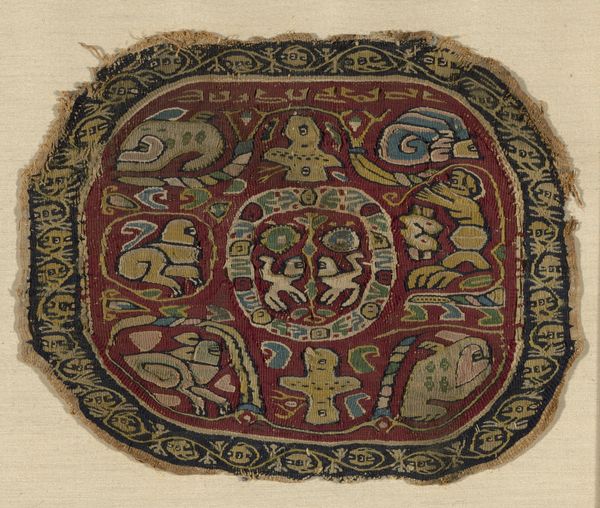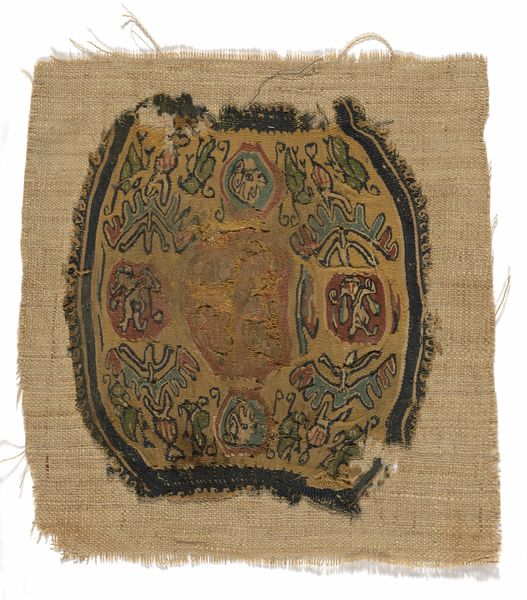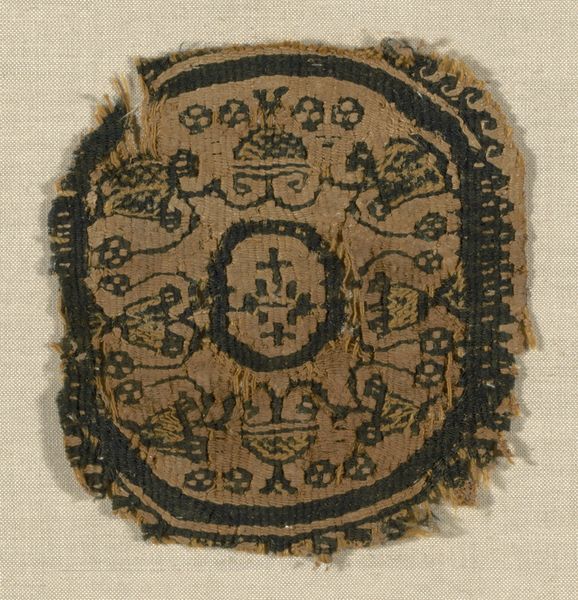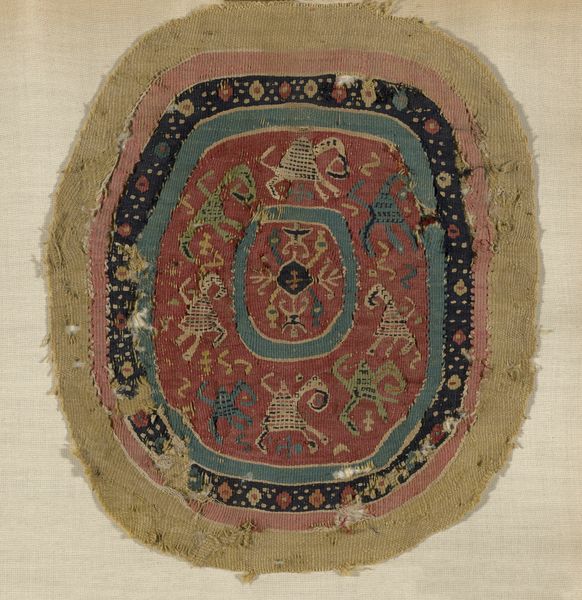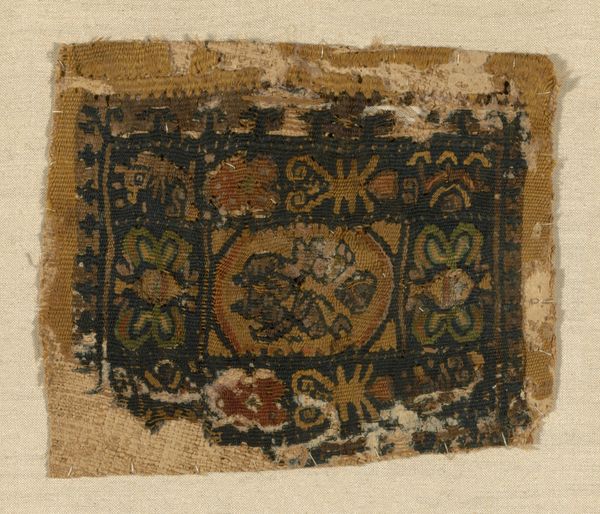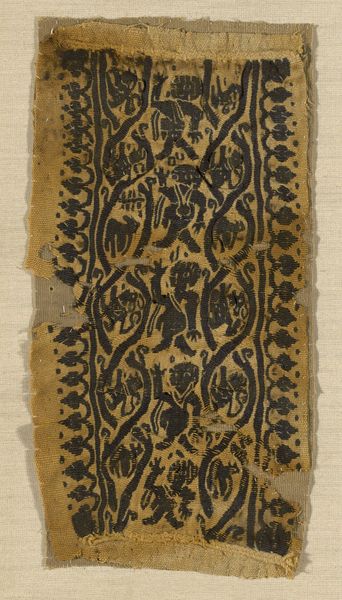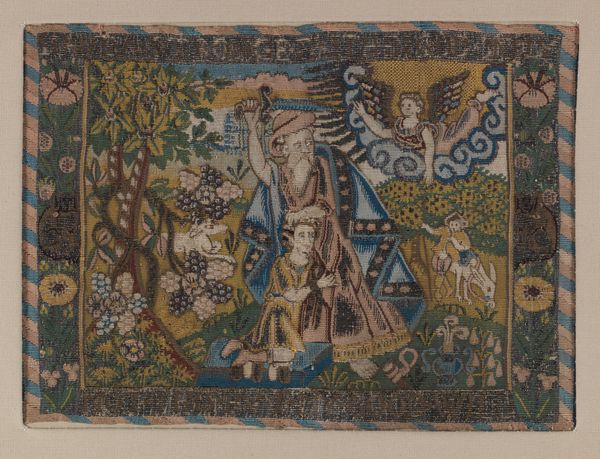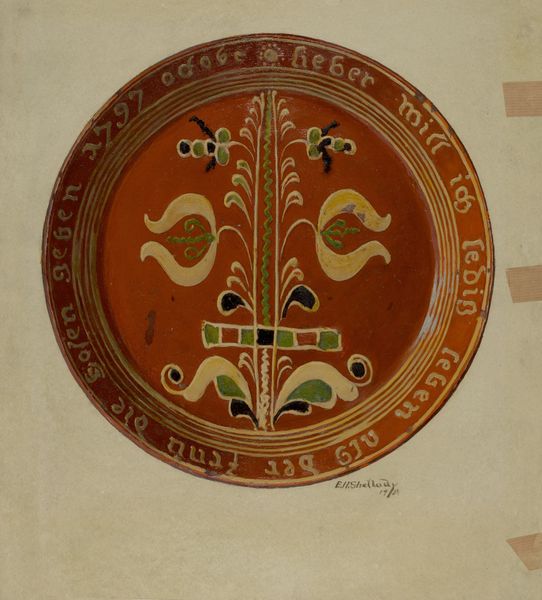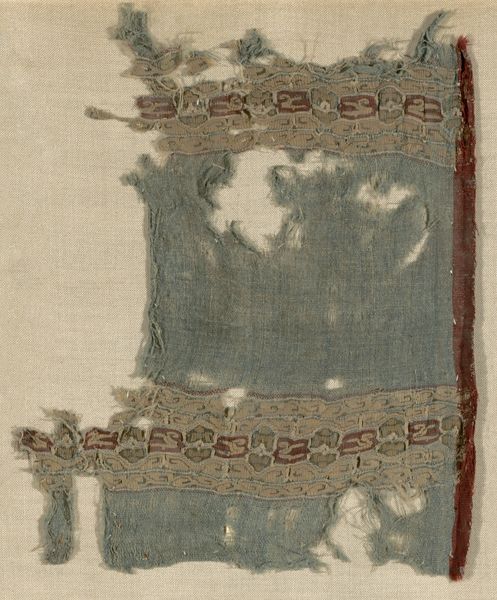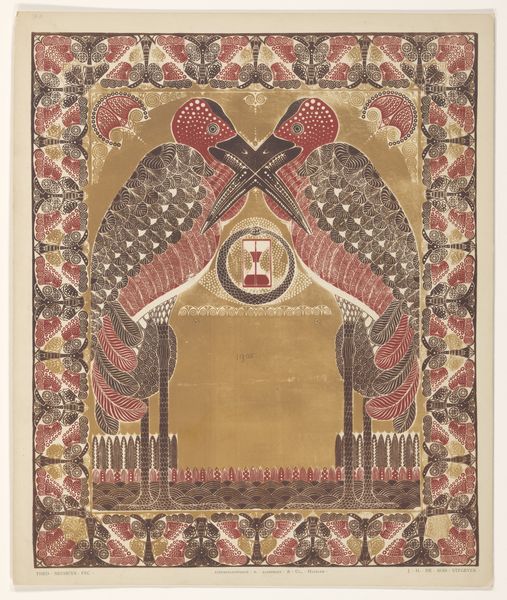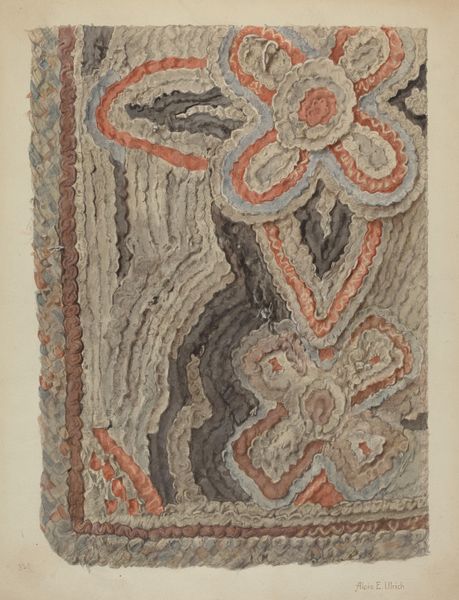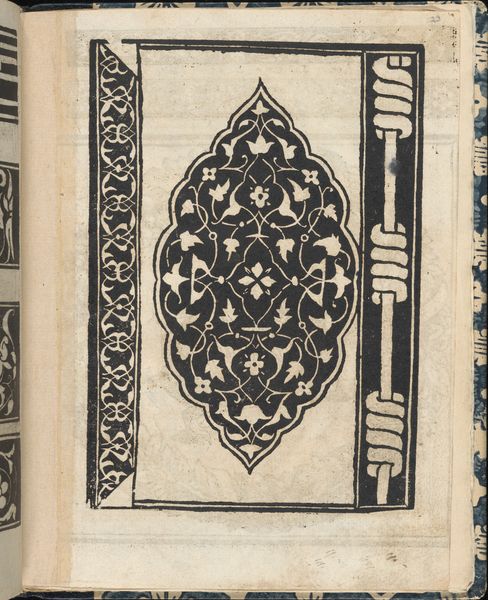
Fragment Roman period (30 B.C.– 641 A.D.)/Arab period (641–969), 6th/8th century
0:00
0:00
fibre-art, weaving, textile, wool
#
fibre-art
#
weaving
#
landscape
#
textile
#
wool
#
figuration
#
text
#
egypt
#
geometric
#
line
#
islamic-art
Dimensions: 11.4 × 8.9 cm (4 1/2 × 3 1/2 in.)
Copyright: Public Domain
Curator: Well, here we have "Fragment," a textile piece hailing from the Coptic period in Egypt, dating roughly from the 6th to 8th century. The medium is wool, meticulously woven, and it resides here at the Art Institute of Chicago. Editor: It's beautiful! Despite the fragmentation, you immediately get a sense of patterned richness. The faded dyes hint at incredible vibrancy in its original form, the touch of the artisan practically palpable in the rough texture. Curator: Indeed. Textile production in Coptic Egypt wasn't merely decorative; it was deeply embedded in the social and economic fabric. These textiles often signified status and played an integral part in funerary rites. Editor: Considering its use, would it have been commissioned or crafted for the general marketplace? What labor conditions existed for artisans who wove these? Did workshops have specific designs they mass-produced, or was there room for creative expression? Curator: The presence of figuration and geometric patterns in conjunction hints at a culture in transition. We're looking at the intersection of Roman, early Christian, and burgeoning Islamic artistic influences, all impacting the artist's visual vocabulary and how they interpreted religious themes, possibly funerary ones as well. Editor: And that interplay manifests physically. Wool isn't merely wool here. The processes of sourcing, dyeing, spinning and weaving it reflects complex networks of trade, access to resources, even class distinctions influencing the availability of specific dyestuffs. It's a tangible map of societal stratification. Curator: Precisely. While "Fragment" may lack the grand narrative sweep of a large-scale painting or sculpture, it offers invaluable insight into the daily life and artistic practices of its time. Editor: I find myself reflecting on the relationship between museums and the preservation—or fragmentation, ironically—of cultural artifacts like this. Who decides which scraps of history warrant conservation, and what stories might we be missing from similar, less fortunate textiles lost to time or circumstance? Curator: That's an important consideration. These objects are survivors, witnesses to cultural shifts. Examining the textile weaving provides an amazing lens to see how history, craft, and religious visual themes intertwine in unexpected ways.
Comments
No comments
Be the first to comment and join the conversation on the ultimate creative platform.
